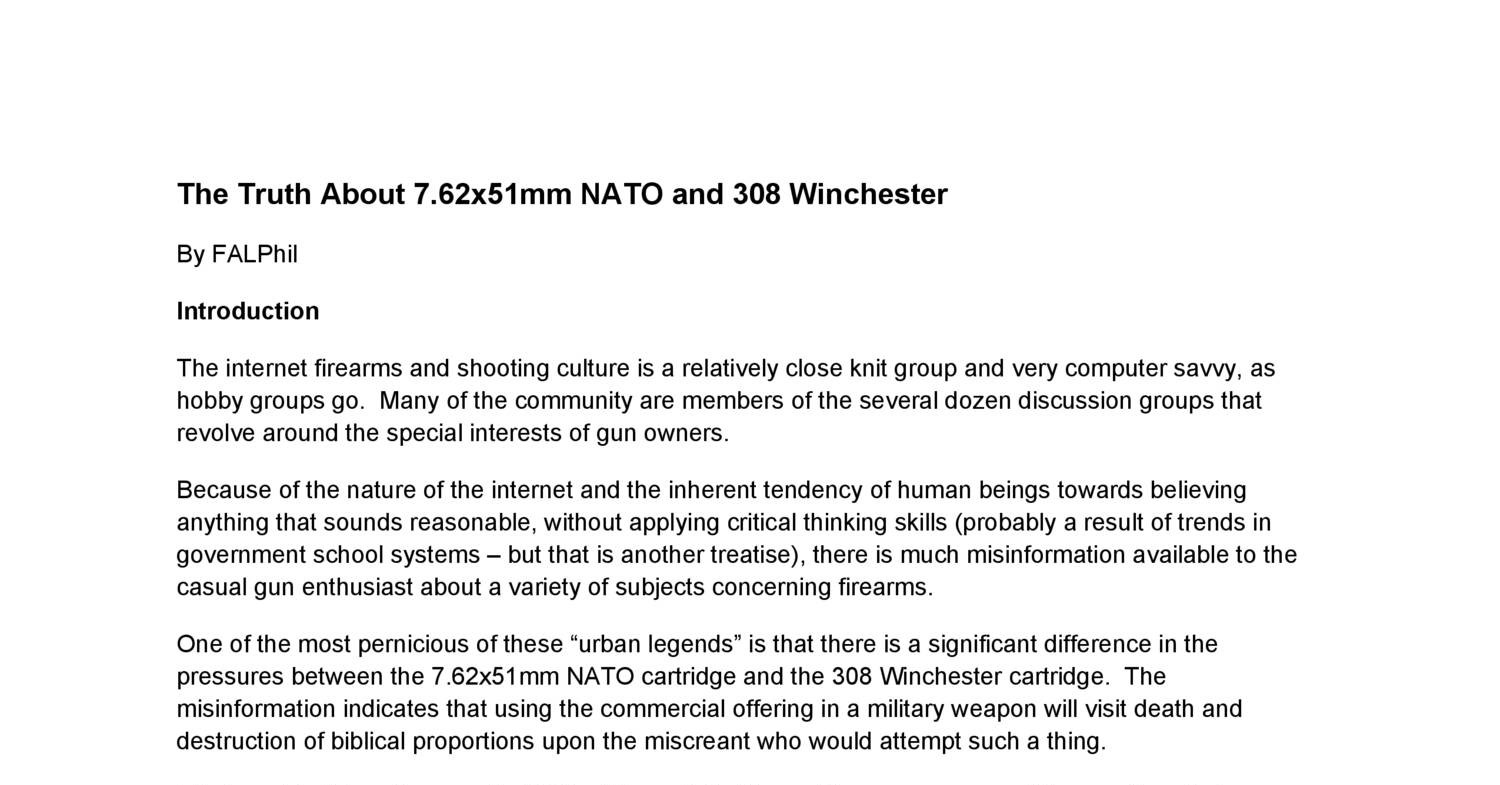Greetings all and thanks for the view. I am new to the Grendel but not to reloading, for example have done some OBT stuff to work up a Tikka Lite in 300 WSM, did my own 458 SOCOM loads for the then-new Barnes SOCOM bullet and others, and wildcatted a 30-25 WSSM AR using QL and a chrony, from scratch. I prefer working up loads to following recipes, and am pretty conversant with the eccentricities of QL and how and when to adjust it to fit your real world results.
Found a bargain on an unfired Sabre Defense fluted 22 inch Grendel upper, so here i am with my 3rd oddball AR project gun. And with one big question that I am sure must be obvious to the old Grendel folks here but the answer is not coming up in my searches after several hours.
Question: Why the CIP max pressure, both in QL and online, listed at 58740 PSI but the SAAMI max is 52000? That is a pretty significant difference! Usually the SAAMIs are higher in rifle rounds.... see 30-06 and 308 Win. for example but no other SAAMI vs CIP I can find have this big a difference.
Apologies if this is an old answered question i am just not bright enough to uncover with my search terms!
Best,
DDBTx
Found a bargain on an unfired Sabre Defense fluted 22 inch Grendel upper, so here i am with my 3rd oddball AR project gun. And with one big question that I am sure must be obvious to the old Grendel folks here but the answer is not coming up in my searches after several hours.
Question: Why the CIP max pressure, both in QL and online, listed at 58740 PSI but the SAAMI max is 52000? That is a pretty significant difference! Usually the SAAMIs are higher in rifle rounds.... see 30-06 and 308 Win. for example but no other SAAMI vs CIP I can find have this big a difference.
Apologies if this is an old answered question i am just not bright enough to uncover with my search terms!
Best,
DDBTx


Comment